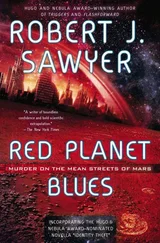The first hurdle was positioning Discovery precisely in space. The mission director, an air force lieutenant colonel, was hunched over a console near the center of the room, looking over a young female captain’s shoulder. He was responsible for the whole show, and it had already been a long day. The bright computer graphics depicted the orbital track of the shuttle, shown in magenta, against a beautifully animated earth imprisoned within a black latitudinal and longitudinal grid.
Thomas walked over. The director had been forewarned that the secretary’s aide would be present on the floor.
“Good morning, General Thomas. Looks good so far. Take a peek here, sir,” he said, tapping the screen. “They should be in position in about fifty minutes.”
The boyish-looking colonel tapped a spot on the CRT where the distinct orbital trace crossed the Pacific Ocean a few hundred miles west of the North American continent. Thomas studied the screen but wondered if he had looked that young as a light colonel.
Over the Pacific Ocean, 170 nautical miles above the earth, the space shuttle Discovery prepared for her final approach for the last orbital burn. Absolute precision was the watchword.
Like bleachers filling before a basketball game, VIPs began to gather in a glass-enclosed spectator gallery above the CSOC Mission Control. From their comfortable chairs the brass had a perfect view of oversized high-definition video screens, which covered the entire front wall thirty yards away. The off-white panels were driven by customized graphics processors assisted by the CSOC’s stable of powerful computers. Live video was also pumped in for everyone’s enjoyment. The system was state of the art, providing a dazzling showcase for computer technologies just beginning to filter into the DoD world. The CSOC had been fortunate to piggyback on the National Test Bed’s proclivity to procure only the finest hardware for their extensive war-gaming simulations.
The left screen exhibited a computer-generated timeline with supporting tabular data detailing key events and milestones. As the countdown progressed, the symbols shifted in color, furnishing a comprehensive roadmap for the uninitiated.
The dominant middle screen hosted an impressive, three-dimensional computer mock-up of the entire experiment’s geometry. A bright blue globe, complete with soft white caps on each pole, slowly turned in space, blotted with the fami-liar pattern of earth’s light brown land masses. Even the la-test weather data was overlaid, painting a third of the earth in broad brushstrokes of white and gray that made the image look exactly like a photograph from space. The orbits of the shuttle and other supporting spacecraft encircled the globe with brightly colored rings. Relevant text doggedly trailed each moving object, providing the latest position and performance data. Thomas marveled at the processing engine required to unleash such a magnificent presentation in real time.
The less sensational right screen was split into two windows, the top for real-time video from a camera mounted in Discovery ’s cargo bay, and the other signal from Vandenberg, from a camera positioned to catch the ICBM launches.
At T minus twenty minutes, the activity level rose to a fever pitch. Important last-minute checks had to be successfully wrapped up before committing the ICBMs. Coordination between the two sites, the CSOC and Vandenberg, had to be exact. A delayed ICBM launch, even for a few short minutes, would throw Discovery completely out of position, dooming any hope for a successful experiment. The shuttle would have to return to earth empty-handed.
“ Discovery , this is Mission Control; commence laser power test at T minus fifteen minutes.”
“Mission Control, this is Discovery , all checks completed satisfactorily. Laser power level within acceptable limits. All critical temperatures within normal bands.”
“ Discovery , Mission Control, stand by.”
Before committing the precious Vandenberg ICBMs, the laser would be fired at half power, out into dark, cold space at an azimuth safe from nosy intruders. Only then could they be sure.
“ Discovery . Fire.”
The camera aboard Discovery captured the test shot magnificently. The one-megawatt chemical laser generated a brilliant, reddish-orange, pencil-thin beam that shot from Discovery ’s cargo bay and into space, lasing for two full seconds. The man-made energy would travel forever through space, someday signaling these earthlings’ monumental triumph to some distant corner of the universe.
“Looks good, Mission Control, power level right on the button, recharging was perfect. Took about five-and-one-half seconds to regain full power.”
“Vandenberg, this is Mission Control; the test shot was a success. Start the final countdown. Discovery , Mission Control, we’re proceeding.”
The digital clock relentlessly crossed T minus three minutes. The mission director leaned back in his chair, his thin frame coiled like a spring; it was up to Vandenberg. There was nothing left to do.
The disembodied voice of the launch director at Vandenberg could be heard over the speakers. When the voice froze at T minus zero, the remote video camera captured the first ICBM as it leapt from its expertly camouflaged silo, ejected by a violent eruption of super-heated steam from a subterranean gas generator. The magnificent missile hung momentarily 150 feet above the ground before the first-stage rocket motor ignited in a billowing cloud of flame and smoke. The surplus Peacekeeper missile roared skyward, lazily rolling and heading out smartly over the Pacific Ocean. In tandem, the ballistic-missile trajectory was plotted on the center screen, originating from a small dot on the surface of the earth near Point Conception off the California coast.
For success, the battle manager first required a launch detection. This critical signal would flow from an early warning satellite floating high above the equator in geostationary orbit. Sensitive infrared sensors would then lock on and track the red-hot booster, developing the needed firing solution to accurately aim the laser. All this would happen in less than two hundred seconds, while the target missile was still in the boost phase. At least that was the plan.
“We have launch detection,” shouted a voice over the intercom. The left-hand screen lit up with a cascade of data signaling initial detection of the first Peacekeeper missile. Within seconds, the second missile was ejected from its silo and headed downrange in hot pursuit of the first. The two missiles were separated by only thirty seconds; the third was scheduled to trail the first pair by fifty—the extra twenty seconds providing a much-welcomed cushion.
All three missiles had been launched and the first two detected when the brilliant, electronic battle manager established a firm track on the first booster. It was seventy-five seconds into flight, fifteen seconds after the booster had shed its cumbersome first stage.
The tiny silicon brain continued to track the accelerating booster, waiting for just the right time to shoot. They needed the hot rocket as close as possible. Seconds into the tracking sequence, the laser slewed a few degrees to the right and locked on the supposed enemy target. In an instant, the chemical laser beam burst forth toward the limb of the earth, this time at full power, reaching out to deposit its lethal dose on the first ICBM. The beam found its mark and locked on the booster for over two seconds. Silence followed over the voice circuits. Floating upside down in orbit, the shuttle crews had picked up the brilliant flash. Awestruck, they groped for the right words.
Читать дальше










